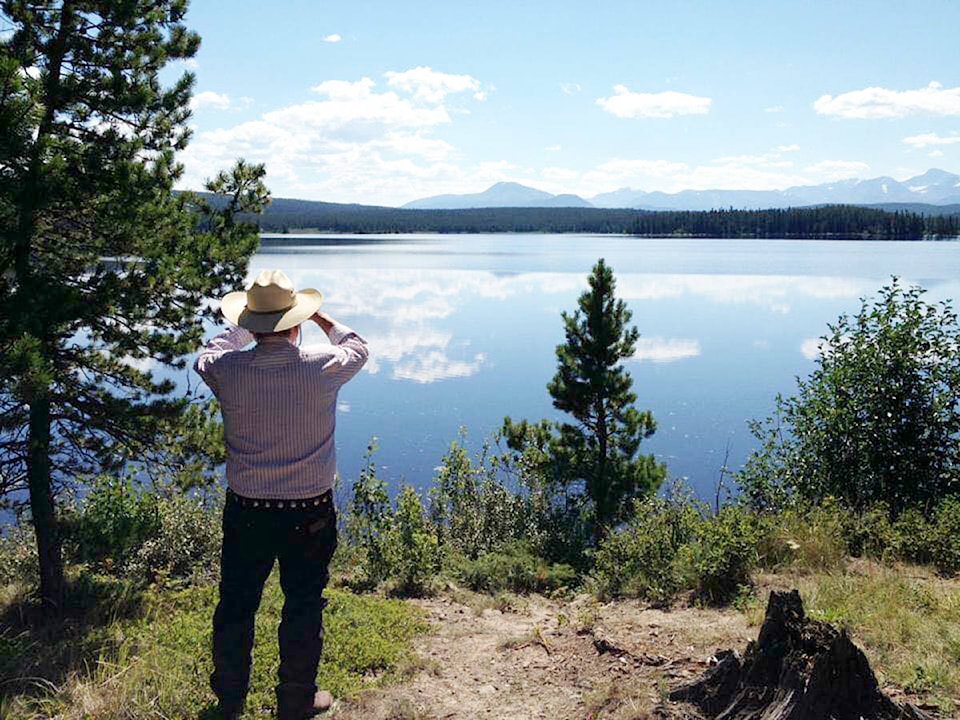The day before a Supreme Court ruling dismissed an appeal application by Taseko Mines Ltd., the Tsilhqot’in Nation all but held its breath as cultural ambassador Peyal Francis Laceese shared a drum song.
A teaching of light through darkness, Laceese said it was not nervousness he felt on Wednesday, May 13 when he sang the Dandzen song (Loon song) but simply a proud moment.
“Throughout this whole process I’ve sat in the court appeals, I sat before nine Supreme Court chairs with a ruling of title and rights,” he said. “Ever since I was young I was taught that when it comes down to it Tsilhqot’in fight for what we believe.”
Because Tsilhqot’in people believe they were put here to protect the water and land it surrounds, Laceese said that responsibility is etched in their spirit.
“Tsilhqot’in turn to past happenings and legends to work through what is happening in current day and so I felt it was a good teaching to relay.”
When the Supreme Court decision came down in their favour once again on May 14, it was welcomed news by the Tsilhqot’in National Government (TNG) who thanked and honoured its youth, elders, leaders and members as well as other Indigenous Nations, allies and supporters who stood with them and fought to protect Teztan Biny and Nabas which ended a 30-year fight to protect the sacred area from mining.
Five days later on May 19, Xeni Gwet’in First Nations Chief Jimmy Lulua said the celebratory mood is far from over and a community celebration is still in the works.
“When things like this come unexpected it’s great news but we were also ready to go to war,” he said. “That’s kind of how our mentality has been over the last 150 years. It’s not very often you get to celebrate so when you celebrate it takes time to plan that out.”
Lulua said he remembered watching the court challenges unfold as a child.
“This has been a long fight of previous leaders and our elders so this is definitely worth celebrating. Looking at the history point of view also I don’t read of too many First Nations communities that are defeating a mining company of this size, not lately anyway,” he said.
Located 125 kilometers southwest of Williams Lake, New Prosperity is one of Canada’s largest undeveloped copper-gold projects. Over its 33-year mine life, production would average 110 million pounds of copper and 234,000 ounces of gold annually, TML stated.
Read More: Canada’s top court dismisses Taseko’s appeal on New Prosperity mine rejection
In 2010 the Prosperity project proposal, which would result in Teztan Biny being drained and utilized as a tailings storage facility, failed to receive federal authorizations to proceed due to significant adverse environmental effects.
Undeterred, TML submitted a new project description to the federal government in 2011 after spending an additional $300 million for a new design it said would preserve Teztan Biny and address the government’s concerns.
That too, however, failed to receive a green light from the Government of Canada in 2014 when it concluded New Prosperity was likely to cause adverse environmental effects that could not be mitigated.
TML continued to retain a provincial environmental assessment certificate, and in 2017, as wildfires raged, was issued provincial permits to conduct pre-construction exploration for the proposed mine.
In December 2019, the B.C. government said it had been asked to facilitate dialogue between TML and TNG who were working to reach a resolution to the long-standing conflict, and certain litigation and regulatory matters related to the project were put on hold while discussions were underway.
Read More: TNG and Taseko agree to meet in person, halt litigation and exploration
Lulua said he doesn’t know what Taseko will do next.
“It’s a great question and only time will tell,” Lulua said.
TML vice-president of corporate affairs, Brian Battison said TML had no comment following the Supreme Court decision dismissing TML’s request to appeal the 2014 decision by the federal government.
Lulua estimates the Tsilhqot’in Nation has spent millions of dollars in defending the remote, 300,000-hectare area of wilderness and wildlife habitat, and pristine natural beauty from mining development.
“Ask an Olympian if they would be successful without support, ask any person who is successful if they had no support. Support is the main driver of any success and I think this is another example of our Nation,” he said.
“We wouldn’t be successful without support.”
With the three-decade-long fight appearing to have drawn to an end, Lulua said the economically-deprived community, which had to put the majority of its financial resources toward the court challenges, can now focus on other revenue-generating opportunities including high-end tourism such as heli-skiing.
“At the end of the day we are looking at business opportunities and we’ve been putting them off because we’ve been fighting for a long time.”
Do you have a comment about this story? email:
rebecca.dyok@wltribune.com
Like us on Facebook and follow us on Twitter.
